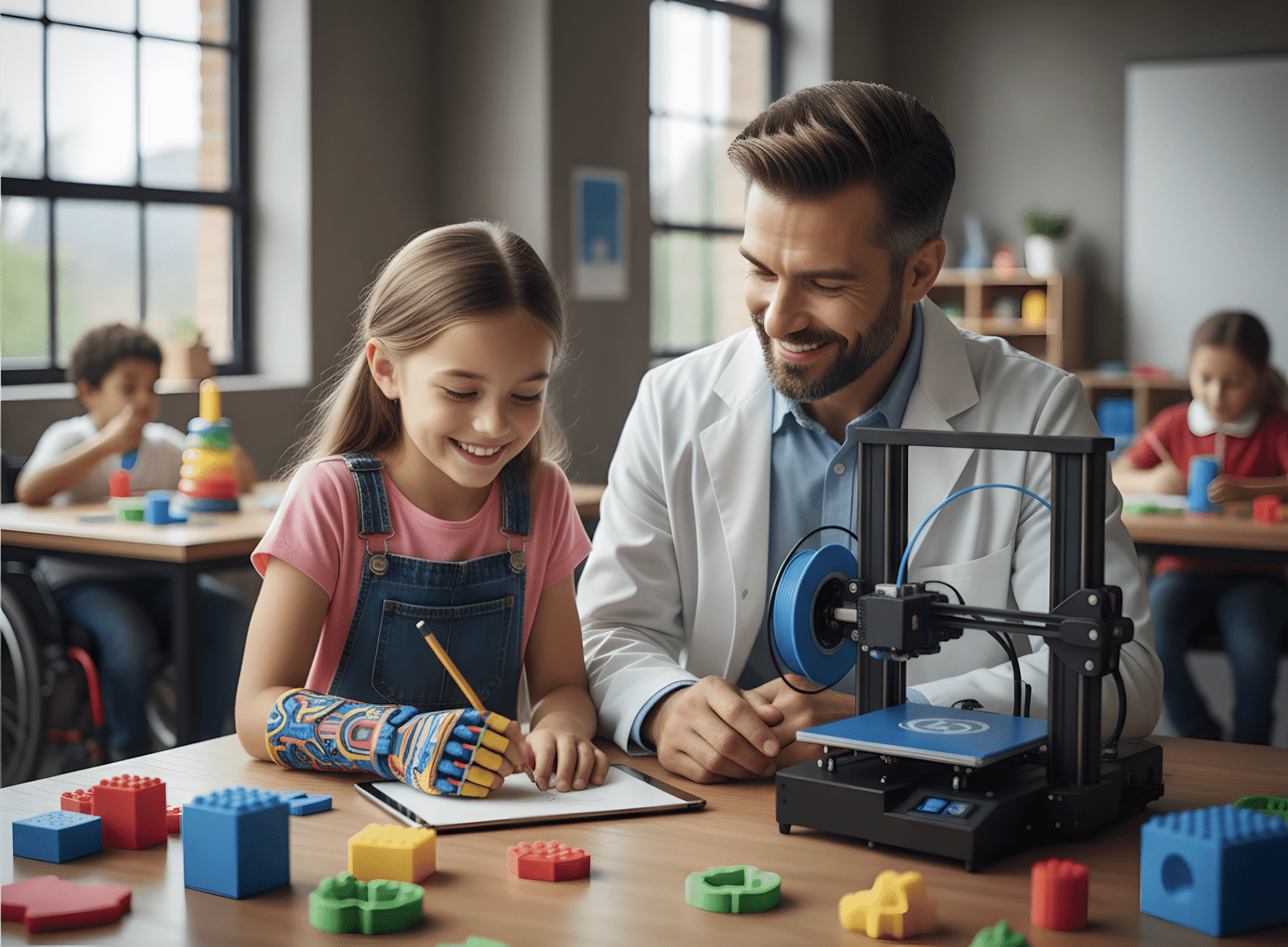Your cart is currently empty!

Unlocking Potential: The Benefits of 3D Printing for Individuals with Special Needs
I’ve long been fascinated by how innovative technologies can transform the lives of children and adults with special needs. From fostering independence to enhancing social interactions, tools that adapt to unique challenges are game-changers. One such technology that’s particularly exciting is 3D printing. It allows for personalized, affordable solutions that not only address physical limitations but also support emotional and cognitive growth. In this post, we’ll explore how 3D printing is revolutionizing support for those with disabilities, drawing on real-world applications to highlight its profound impact.
Personalization: Tailoring Solutions to Individual Needs
One of the standout advantages of 3D printing lies in its ability to create highly customized devices. Traditional assistive tools often come in standard sizes or designs, which can feel impersonal and ineffective. With 3D printing, however, we can prototype and produce items that fit an individual’s exact requirements—whether it’s a child’s mobility trainer or an adult’s adaptive grip for everyday tools.
From a psychological perspective, this personalization is invaluable. When a device is designed with the user’s input, it empowers them, boosting self-esteem and a sense of agency. For children with mobility challenges, for instance, 3D-printed toddler trainers can restore the joy of movement, allowing them to explore their environment like their peers. This not only aids physical development but also reduces feelings of frustration or isolation, promoting healthier emotional regulation. Adults benefit similarly; custom prosthetics or orthotics that match their body and lifestyle can improve adherence to use, leading to greater confidence and participation in daily activities.
Affordability and Accessibility: Breaking Down Barriers
Cost has historically been a major hurdle in accessing assistive technology, but 3D printing changes that dynamic. By using affordable materials and rapid production methods, organizations can deliver devices at little to no cost to families. This democratizes access, especially in underserved communities or developing regions where traditional manufacturing might be out of reach.
Psychologically, this accessibility fosters inclusion and equity. Imagine a young student with a physical disability who can now use a 3D-printed adaptive keyboard or stylus—suddenly, they’re engaging more fully in classroom activities, which enhances their cognitive skills and social bonds. For adults, affordable ramps or ergonomic aids printed on demand can make public spaces more navigable, reducing stress and encouraging greater community involvement. The speed of 3D printing also means quicker iterations; if a device doesn’t quite work, adjustments can be made swiftly, minimizing downtime and supporting ongoing progress in therapy or education.
Educational and Collaborative Opportunities
Beyond physical aids, 3D printing opens doors to learning and collaboration, which are core to psychological development. In educational settings, it serves as a hands-on tool for STEM programs tailored to special needs youth. Students can design their own assistive devices, learning problem-solving skills while addressing real-life challenges. This process encourages creativity and resilience, key traits for long-term well-being.
Research shows that incorporating 3D printing in inclusive classrooms promotes cooperative learning. Students without disabilities work alongside those with special needs to brainstorm and print solutions, building empathy and teamwork. For example, creating custom tactile models for visually impaired learners can make abstract concepts concrete, improving comprehension and motivation. As an educational psychologist, I see this as a way to shift mindsets—from viewing disabilities as limitations to opportunities for innovation—ultimately leading to more supportive, inclusive societies.
Real-World Impact: Stories of Transformation
Organizations like MakeGood exemplify these benefits in action. By collaborating with individuals who have lived experiences of disabilities, they produce open-source and custom devices, such as mobility aids that have helped children across the globe—from the U.S. to Pakistan and Colombia—regain their playfulness and independence. Partnerships with 3D printing sponsors enable them to scale up, delivering hundreds of devices and impacting countless lives.
Similarly, broader applications include 3D-printed adaptive clothing for children, which simplifies dressing and boosts self-reliance, or urban ramps that enhance mobility in cities. These initiatives not only solve immediate problems but also inspire a ripple effect: empowered individuals contribute more to their communities, fostering a cycle of positive change.
Looking Ahead: A More Inclusive Future
In my work, I’ve witnessed how small adaptations can lead to significant breakthroughs in development and happiness. 3D printing stands out as a versatile ally in this journey, offering customization, affordability, and educational value that traditional methods simply can’t match. Whether you’re a parent, educator, or innovator in the 3D printing space, consider how this technology can be part of creating a world where everyone thrives. Let’s continue exploring and sharing these tools to make inclusion not just a goal, but a reality. If you’ve had experiences with 3D printing for special needs, I’d love to hear your thoughts in the comments!

Leave a Reply